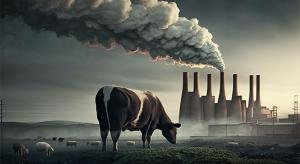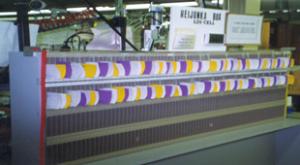All Features

Bruce Hamilton
Last May marked the 35th anniversary of the Shingo Prize, an award bestowed each year to recognize organizations that demonstrate the principles and methods espoused by its namesake, Shigeo Shingo. Although I haven’t made it to every celebration and award ceremony, it turns out that I was the only…

Ken Voytek
It’s time for U.S. manufacturers to focus on productivity or they will lose their long-term advantage. Productivity is fundamentally about increasing output rather than decreasing costs and inputs while output remains static. We faced this challenge during the 1980s and 1990s but didn’t learn much…

Gleb Tsipursky
A new study from the University of Birmingham has found that managers have developed a more positive outlook on the benefits of hybrid work productivity since the Covid-19 pandemic. The research surveyed 597 managers and found that 51.8% of them agreed that working from home improves employee…

Mike Figliuolo
It’s a great time of year. Beautiful weather, flowers blooming, and 110 bags of mulch to be spread tell you it’s spring. Now is when we traditionally clean our homes and yards. It’s also a great time to clean up your work and professional life.
Face it: We’re creatures of habit and averse to…

Akhilesh Gulati, Rolf Biernath
Maria stretched her arms, taking in a deep breath as she savored the lingering flavor of dark, rich black coffee. She waited for the system to log in and connect to her biweekly meeting with her informal innovation group, a bunch of semiretired professionals passionate about quality practices and…

William A. Levinson
Time value of money calculations, including net present value analysis, is important when selecting projects and investments. The calculations are part of the body of knowledge for some of ASQ’s certification exams. They also go a long way toward explaining exactly what happened to Silicon Valley…

Jake Mazulewicz
Wildland firefighters. Air traffic controllers. Flight deck crews of aircraft carriers. Operators of nuclear power plants and the national bulk electric grid. These are among the safest and most reliable work teams in the world. And they don’t try to eliminate all errors and surprises.
Decades of…

Gleb Tsipursky
Many leaders, driven by memories of pre-pandemic times, believe that forcing employees to return to the office will naturally lead to mentoring and development. For example, consider what Salesforce CEO Marc Benioff said in spring 2023 on the On With Kara Swisher podcast after the company demanded…

Tina Behers
If the last few years have taught us anything, it’s how quickly—and drastically—things can change in business. Indeed, organizations have been in an almost constant state of change through the ebbs and flows of the pandemic and its new work models, the fluctuating economy, and labor challenges…

Emily Newton
It’s increasingly common for today’s warehouse managers to pursue robotic material-handling solutions. That approach can boost productivity, reduce injury rates, and enable companies to adjust to changing demands. However, before company decision-makers choose what kind of robots they want, they…

Megan Wallin-Kerth
The ability to observe relationships, patterns, and environment may be deemed a “soft” skill, but there’s plenty of hard data supporting the power of observation in the workplace. After all, observation is the sometimes overlooked first step in the scientific method: Make an observation, and from…

Bryan Christiansen
Benjamin Franklin said, “... in this world nothing can be said to be certain, except death and taxes.” If you work in maintenance, you know that equipment failure is also on that list.
As inevitable as equipment failures are, by paying close attention to mean time to recovery (MTTR), you can make…

Angie Basiouny
Unpredictable schedules are so disruptive to the lives of employees that even 30 days of high shift variability in a year increases the chances a worker will quit by 20 percent, according to a new study from Wharton experts. Employers use just-in-time scheduling to cover peak demand and raise both…

Harish Jose
I’m looking at ideas of the famous Algerian-French philosopher, Jacques Derrida, often described as a post-structuralist. His most famous idea is deconstruction, often associated with analyzing literary works. A text is presented as a coherent whole with a basic idea in the center. The text’s…

Phanish Puranam
It’s no secret that there are no universally applicable organization designs. What works in one context may not work in another because each organization has a different history, culture, and cast of characters. And yet there is a thriving segment of the management consulting business that…

Matt Fieldman, Blair Milo
I’m ashamed to say that I’ve only been to Indiana once—for a fun weekend in Indianapolis. I will say that its Children’s Museum is truly world-class, and it was great going duckpin bowling for the first time.
Though I haven’t taken full advantage of Indiana as a tourist destination (yet!), as a…

Bob Ferrone
Quality and sustainability are two critical aspects of modern business operations that are closely intertwined. While quality refers to the level of excellence or standard achieved in a product or service, sustainability relates to the ability to maintain or improve that quality over time while…

Megan Wallin-Kerth
“The best is the enemy of good,” wrote French historian and philosopher Voltaire. Today that quote seems more appropriate than ever. A longitudinal meta-analysis study from 1989 to 2016 looking at data from more than 41,000 students across the U.S., U.K., and Canada revealed that perfectionism has…

Bruce Hamilton
There’s a certain irony in the recent attention paid to the application of robots on the shop floor. On a couple occasions in the past year, I’ve heard manufacturing colleagues talk about the benefits of deploying robots to handle material conveyance. “Better,” they say, “to redeploy humans to…

Brian Brooks
Producing high-quality products is crucial for any business. But designing quality into the product from the start is the only significant way a business can improve its product margins. When you use detection methods and find a nonconformance, you’ve already invested in that nonconforming product…

Paul Laughlin
Continuing our thinking about ways for data leaders to save money during a recession, this article drills into saving on your data usage. Following my last post reminiscing on the lessons I learned during past recessions, the early environmentalist slogan “reduce, reuse, recycle” has stayed in my…

Akhilesh Gulati
Efrain entered his office on a bright, sunny morning, a smile on his face. He poured a cup of coffee and took his seat behind his desk. From his vantage point, he could see his staff walking in and settling down to the day’s work.
His executive placement firm had risen from a downswing and was…

Katie Rapp
A major focus of the current administration is revitalizing American manufacturing as new technologies are changing the way things are made. Manufacturing Extension Partnership (MEP) director Pravina Raghavan recently appeared on Government Matters TV, where she discussed how MEP National Network…

Bryan Christiansen
When it comes to maintaining the critical infrastructure and machinery of your facility, choosing the right maintenance contractor can make all the difference. It's essential to find a contractor who not only has the knowledge and skills to keep a maintenance program running smoothly, but also the…

Tom Taormina
The quality profession has been evolving since the Industrial Revolution. I’ve lived part of this journey since the 1970s and have experienced its effect. ASQ and other organizations have continually pushed the envelope in creating training and certifications in the skill sets we’ve developed over…